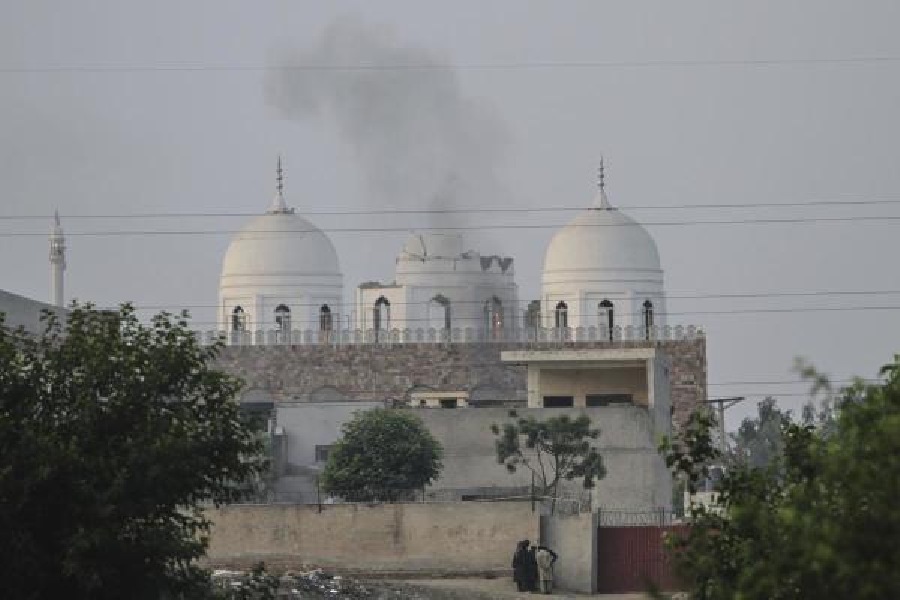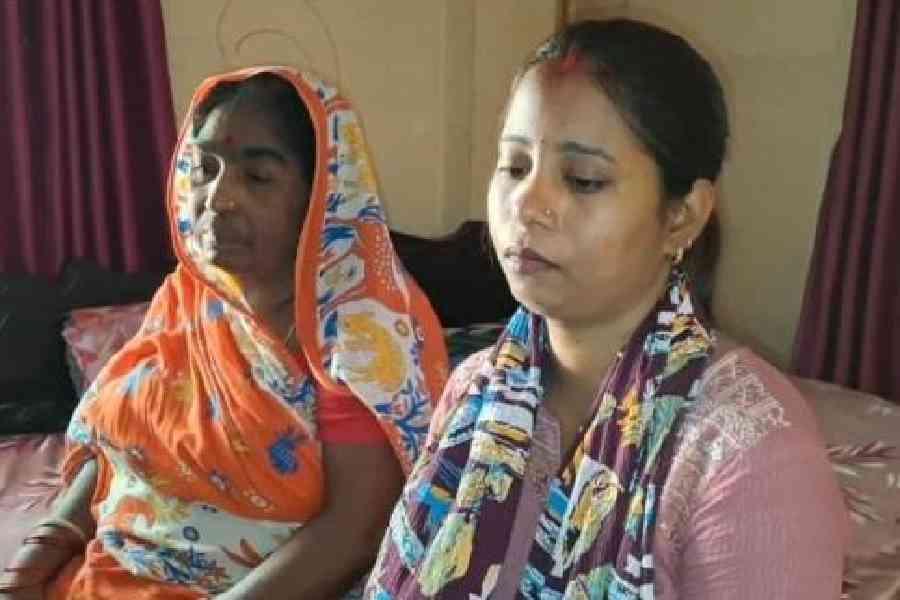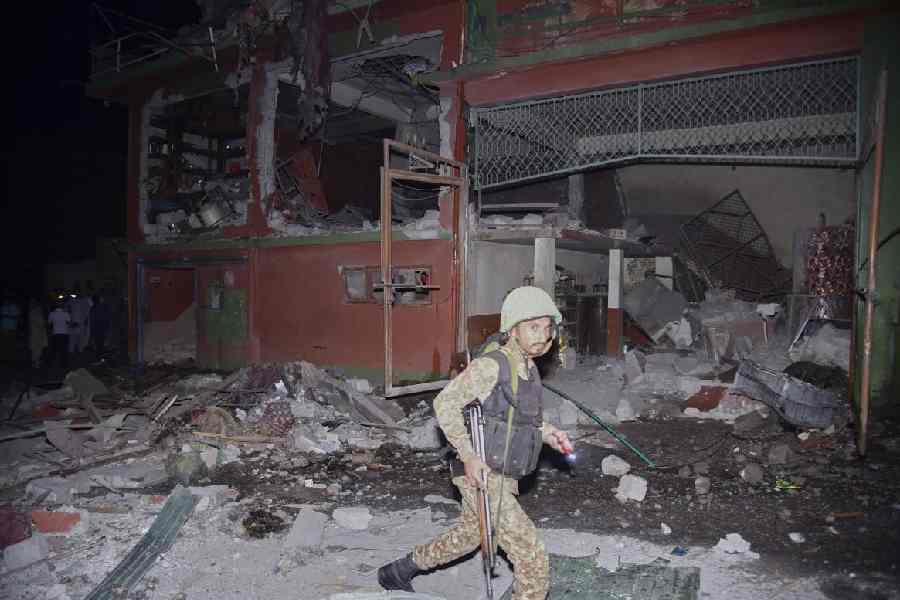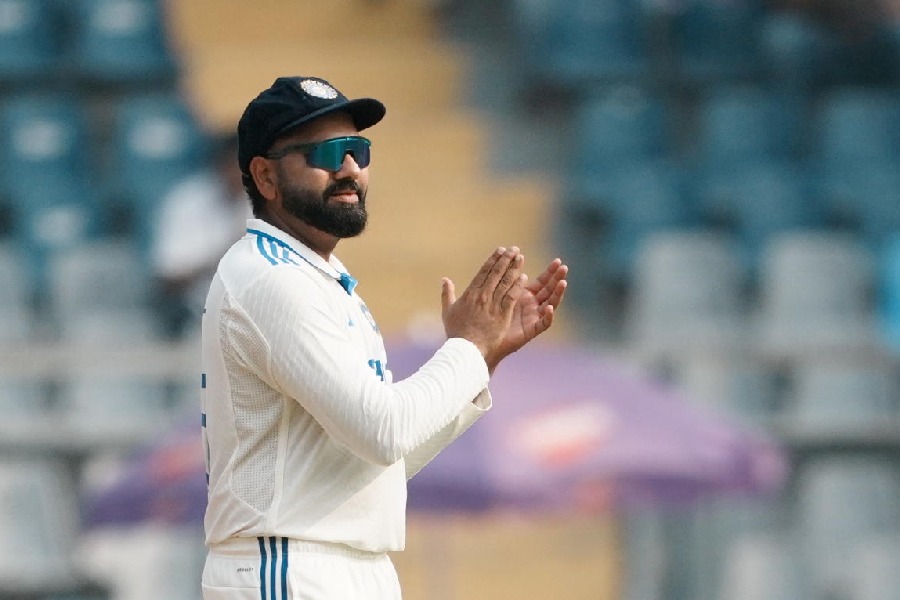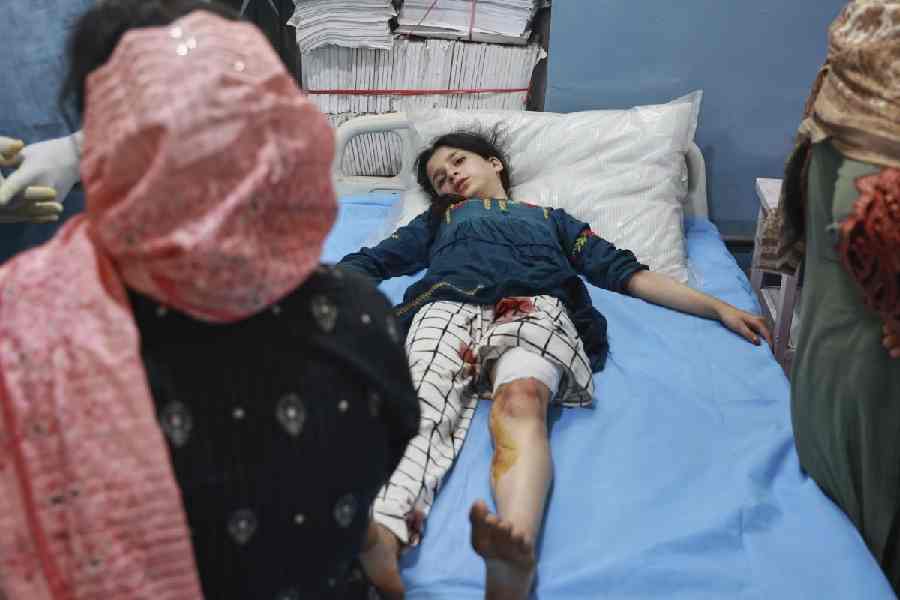 |
| M.A.D (music, art and dance) was the name of the game, so it was bound to be oodles of fun. Oxford Bookstore and Pogo held the workshop, two three-hour sessions for 7-14 year olds, on May 28. The morning was all about art and dance, while the evening was dedicated to mime and theatre. Picture by Sanjoy Chattopadhyaya |
What?s your idea of unwinding after three especially bad exams on a sweltering May afternoon? For Mandy M. (CIS) and Gangotri Basu (Lake Girls? School), it was an hour-long adda with Sarnath Banerjee, author of India?s first graphic novel, Corridor, recently in town for a workshop at British Council.
Many of us in India still don?t have a clear idea about the graphic novel. Tell us more about the genre.
The whole idea is to tell a story. ?Graphic novel? is not much of a style or genre, it?s more of a term used by publishing houses to separate comics, which generally means humourous or for children, from more serious concerns which are handled with graphics. It isn?t a new form of writing, but it has become prominent around the world only recently. Graphic novels had been around for quite some time, but people practised them in almost closely-knit tribes, staying away from mainstream media. In fact, now that it has suddenly become high-profile, some graphic novelists are actually feeling uncomfortable about it.
Do you think the graphic novel is still not considered serious literature?
Well, publishing houses are taking it quite seriously. I don?t know if it?s good or bad but in England, in the Continent, and in America, graphic novel is a huge craze right now. Recently there was a cartoon in The New Yorker which said something like ?I guess this year I?ll have to read a graphic novel to be part of the fashionable, elite people.? I think the popularity is good. A lot more people are reading comics now.
In India, is the graphic novel here to stay?
If you had asked me this question a few months ago, I would?ve said ?not sure?. There still exists this hierarchy of written novels because they make you feel ?intellectual?. At least among the neo-literates, it is very fashionable to be seen with a fat book in hand, say James Joyce?s Ulysses, which I find extremely boring...
I think most people who enjoyed my book are already fairly literate, they?ve already made peace with their Joyces and Thomas Manns. They don?t have this compulsion to be seen with big fat books. Typically speaking, that?s usually my reader ? the post-literate.
 |
| Students display their handiwork at Chowringhee High School’s annual art and craft exhibition held earlier this month. |
Where did Corridor and its characters come from?
When I did college in Delhi I used to visit this second-hand bookshop owned by a guy called Kareem, who was mostly the influence for this character called Jehangir Rangoonwalla. This guy, who seemed to know everything and could start a long discussion from simplistic questions, was the initial starting point. Then it became a story of five people juxtaposed with the city as backdrop. Inspirations for the other characters came from all walks of life ? a brother, an ex-landlord?s son, bits of myself here and there. You take a bit of somebody?s personality and then add a bit of somebody else?s, and a new one emerges. Everything is a culmination of your memories and thoughts ? about people you know, people you thought you?ve met, people you thought you?ve met but never met, people you never thought you?ve met...
When the characters Brighu and Kali get back after a break-up, he has unfaithfulness behind him and she?s the one cooking biryani for his arrival...
You do have a point, nobody asked me this question before. I understand the politics you?re talking about, but I never quite saw it that way. I don?t come from a background where cooking is a gendered space. In my own household back in London, my girlfriend had a job while I used to stay at home and work on my comics, so I was the one who did the cooking. And I cooked better than her, so that also helped!
A lot of my male friends cook as well. Cooking these days has become this ultra-macho, new-agey, metrosexual thing to do. If you don?t gender it at all, cooking for someone is a display of love for them. In my book, this is almost the non-verbal way of saying that everything is alright, there is still love in the household, since they had broken up before Brighu had left home. And while Kali cooks biryani Brighu washes the dishes, so it?s not a one-way process.
Then you?re writing for a very small segment, obviously...
I?m writing for myself, which is a very small segment, obviously (laughs). I can only write from my own particular set of ethics and understanding. You have a very pertinent point on the gender-sensitivity topic, but I never saw it that way and I?m not really interested in harping on it. Honestly, I just truthfully recorded what generally happens.
Now that you?re a published writer, you?ll have to think about a bigger audience for your next work, won?t you?
My next work will still be for a very small segment, which is again called myself. Corridor was written three years back and since that time my interests and preoccupations have changed. I have become interested in the uncanny aspects of ordinary life, about life in 18th century Calcutta, etc. Maybe my writing has become a little less local. I?ve been living out of my context for a long time and when you live outside your context, that becomes your context. That is all the difference you?ll find in this new graphic novel, which I?ve based on 18th century Calcutta. Hopefully the English edition of the novel will be out by early February 2006.
Do you think the international market affects Indian writing?
For a long time the West dictated English writing in India. Writers had been writing in the pattern of what would sell in the Western market ? saris, spices and communalism and all that. A friend had once called it ?cinnamon-scented papaya? (chuckles). That?s the kind of writing the Western audience demands and that?s what our writers had played along with until recently. You can?t blame them entirely because, sadly, on one level it is almost compulsory to get validation from the West to get publicised in India. We are a country with a huge educated middle-class, but very few people actually read books. An even smaller number buy them. Reading is confined to a very self-conscious activity of ?intellectuals?. So most writers played up to the West.
Nowadays, there is a slow change happening. More people are reading, so as an Indian writer you can write for your people only. You?re not any longer trying to index your work to fit into the larger international market.
Let?s talk about the workshops you?ve been doing. Are you satisfied with the talent?
I?ve done a lot of workshops and some of them are fairly crazy. For example, I have five months of workshop ahead of me where every week I?m taking a bunch of 18-year-olds from Brick Lane on a bus journey across London. The workshop actually happens inside the bus. Out of it comes a book.
About talent, most of the time I?m not satisfied. But the workshop I did this time in Calcutta was way above the average standard. I think many of the students are genuinely interested, but that can only be sustained by giving them a platform... The outputs of the workshops should be published or displayed in an exhibition. That?s the only way to bring about graphic sensibility, already done in the West.
Give some tips for young aspiring writers. Like coping with rejection...
Well, I didn?t get a lot of rejections for Corridor, only two! The trick is to think the person who has rejected you is stupid and laugh about it. When you get rejected you feel the world is crumbling, say for a week, and then you rustle up courage to send it again. You get rejected and again it takes you a week. After the third or fourth rejection, you get hardened. Learn to take the pleasure of rejection. Rejection is a great validation of how brilliant you are and how average the person who rejected you is!
 |
| Participants at the animation workshop at AAAT. Picture by Aranya Sen |
Small talk
?I used to think people dress up like cartoons and act in front of the camera. Then something happens to them inside the computer and they become actual cartoons.? This was 11-year-old Varunavi Newar explaining her take on the animated art in front of a gathering of parents at the Academy of Animation Arts & Technology (AAAT).
Varunavi?s thoughts must have echoed the confusion in the minds of most children about the genesis of their favourite toons. But 11 of them, including her, can now tell between 2D and 3D animation, inbetweening and sketching, thanks to a 10-day workshop they just completed.
On Friday, they were awarded their certificates after the screening of the two-minute films they created. Says course coordinator Anshu Arya, also a former student of AAAT: ?They wrote their own story, provided the voiceovers and did all the sketches. We only animated the pictures.?
Allowing the kids to work with their own stories threw up a variety of ideas on screen. The storyline of the films are simple and honest. The youngest, Manan Ganeriwala, standing tall at six-and-half-years, unveiled the screening with his Ashwin?s Friends. ?My film is based on my classmate Ashwin who has no friends.? In the film, a child?s dream of playmates comes true.
Sanjali Mitra?s Tit for Tat, on a woodpecker?s revenge on a woodcutter, was among the best. ?Cutting trees is causing global warming,? the Class V student declares with a poise beyond her years. Violence was the winner in Spiderman fan Dev Varenya Newar?s film on thwarting a bank robbery.
?The camp gave them a chance to combine their creativity and interest in cartoons,? said Sarita Chowdhury, mother of participants Aryaman and Tanisha. ?We are now being pressed to organise regular classes for children,? adds Ranjini Mukherjee of AAAT.
Education For All (EFA) held recently was of great significance to those who are unaware of what education really means. The event was organised by the NGO Prayasam all across West Bengal over one week.
EFA started with an extempore speech competition. Piyali Majumdar of Prayasam spoke about the importance of child rights. The topics for the one-minute extempore included solving problems regarding child rights, gender inequality, improving learning methods through better teachers, interesting books, small classes, etc, adult literacy in rural areas and pre-school education.
There was a poster and slogan competition in South Dum Dum municipality schools. The topic was ?Our world, our views, to remind EFA by 2015?. The children of Rajarhat Municipality School performed the play Educate to End Poverty.
The children (Classes IV to VIII) of Nabadisha participated in an enrolment drive, Send my friend to school, organised by Prayasam along with Vikramshilla Education Resource Society, Banga Education Society and Paschim Banga Rajya Prarambhik Shiksha Unnayan Sanstha.
Prayasam also organised an art camp for kids in Kamarhati. The students of Bokjuri Village Gram Panchayat School, who work in the Haroa Brick Field, were shown the UNICEF documentary film Mina.
At an essay writing competition, the topic was ?Education is the key to end poverty?. The young writers voiced their fears, joys, sorrows and claimed their rights to survival, development, protection and participation.
Various other programmes are also organised for migrant students from different parts of the state for around six months every year to provide them basic education.
Sourendra Kumar Das,
Class XI, Sri Aurobindo Institute






